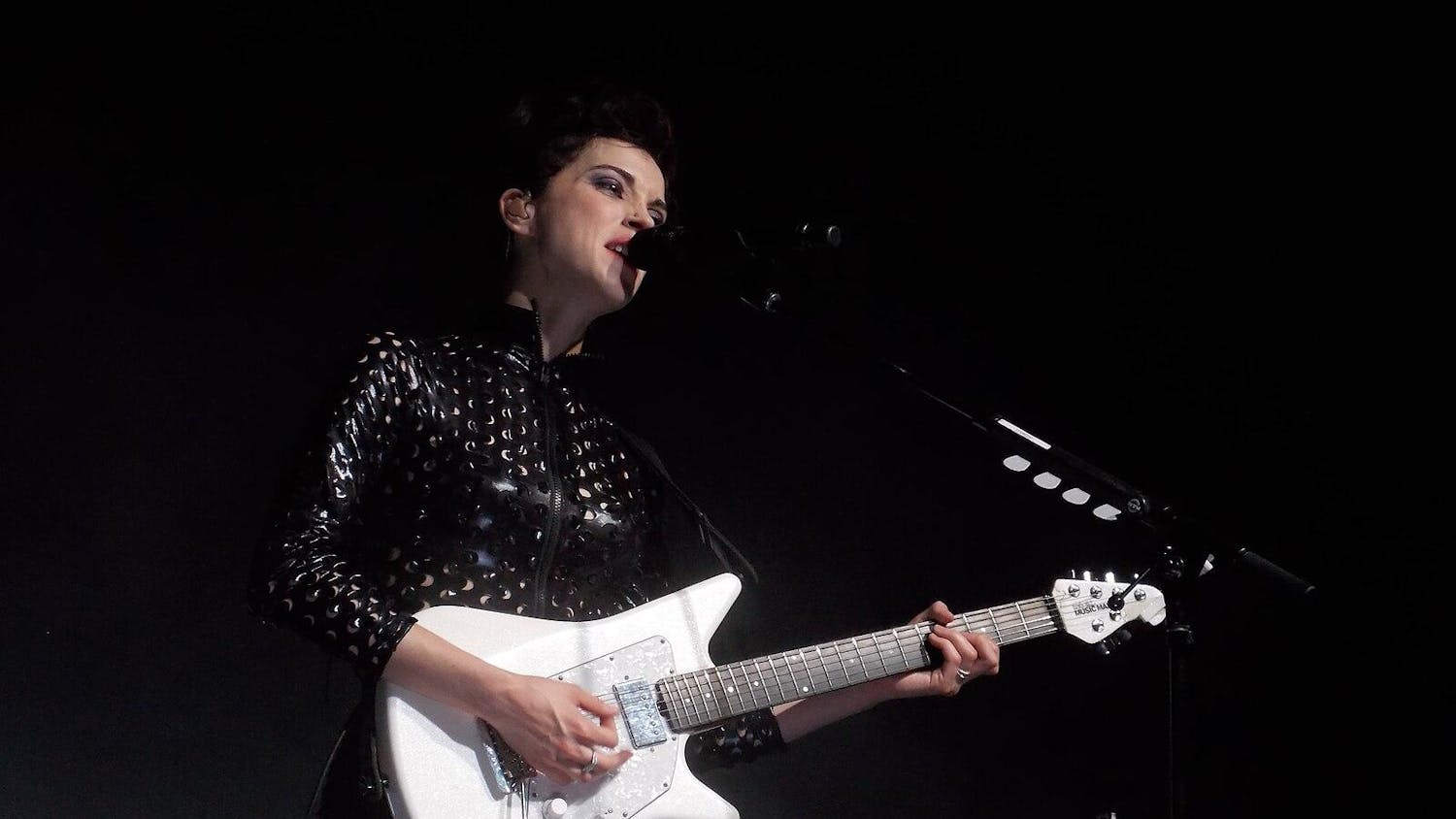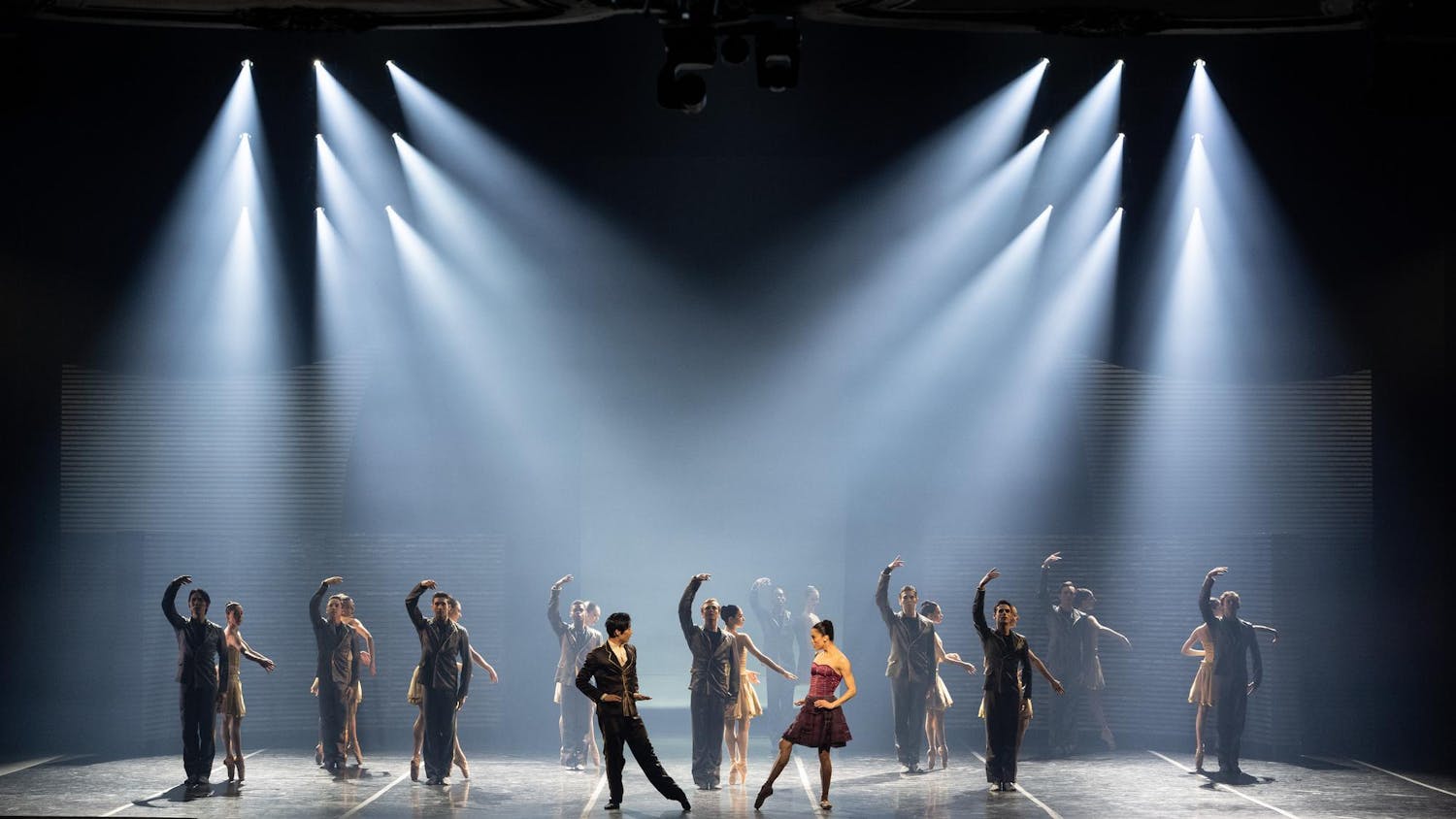Way before TLC's "Miami Ink" (2005-2008) delivered the art of tattooing to reality television audiences, Japanese artists in the late Edo period (1615-1868) documented an obsession with body ink in woodblock prints. The Museum of Fine Arts, Boston (MFA) — which boasts the largest collection of Japanese woodblock prints outside of Japan — assembled a vibrant collection of tattoo images in an exhibition entitled "Under the Skin: Tattoos in Japanese Prints." Concentrated in one-half of a room regularly devoted to ceramics, the collection builds layers of pattern and influence, attempting to encompass varying societal roles attached to tattoos and the inspirations behind the designs.
Tattooing became popular practice — and subject matter for prints — beginning in the early 19th century, particularly in Edo (modern day Tokyo) and Osaka. Before then, tattoos were used more often to mark dangerous criminals or as professions of loyalty and devotion to a lover or a deity.
When a prohibition was placed on tattooing during the Meiji Era (1868-1912), body ink became an underground practice associated with organized crime; the ban lasted until the 20th century. It's clear from the text accompanying the some 70 images in the gallery that tattoos have had a complex — one might even say, "wild" — past in Japan. Whether doled out as punishment, adorned as decoration or linked to muscular, mythological heroes, these skin stamps carried with them a web of associations and motifs — ones that the MFA tries to categorize for viewers in the gallery.
Utagawa Kuniyoshi's prints are an appropriate place to start. The MFA places them near the beginning of the circuit around the room, emphasizing their importance in establishing a popular tattoo aesthetic. In scenes from his woodblock interpretation of the Chinese martial arts novel "Outlaws of the Marsh" (estimated mid-16th century), Kuniyoshi immortalized the feats of "One Hundred and Eight Heroes" (1827-30) through sculptured, muscled bodies and fearsome faces printed with bright, swirling tattoos. His fantastical prints formed the basis for tattoo designs in Japanese culture, which were then reflected in later woodblock prints of tattooed men; women were less frequently adorned.
It is this relationship between woodblock prints and printed skin that makes the exhibition nuanced and layered. Japanese tattoo artists, it is believed, were originally trained as block cutters, translating drawn designs to the wooden canvases that made them into mass-producible pieces.
The organization and patterns of the prints displayed on the walls reflect the nature of the tattoos shown in them: flat, geometric designs laced with symbolic flora or fauna, arranged so that hardly any empty space remains. Sometimes the woodblock print depicts a man wearing a tattoo based on a myth depicted in an earlier woodblock print. It turns out that "Under the Skin" is showing prints of prints of prints. It's enough to make a visitor's head spin, but in a good way.
The exhibit also leaves an impression because some of the prints are very humorous. In "Onitsutaya Azamino and Gontarô, a Man of the World" (1798-99) by Kitagawa Utamaro I, a man grimaces as his lover, one chubby hand gripping a needle and the other around his arm, etches her name and the word "inochi" (meaning "life") into his bicep as proof of his dedication to her. His expression is overdramatic and comical, the sort of thing that would match any teenager boy's face as the buzz of a needle cues his immediate regret at having his 17-year-old girlfriend's name permanently attached to his skin. In another print, "Lu Zhisen the Tattooed Priest" (1843-47) by Utagawa Kuniyoshi, the hunched, otherwise intimidating priest is slightly undermined by the garden of flowers blanketing his back — or maybe he was just challenging the definition of "machismo."
"Under the Skin" is an exercise in peeking past the surface. While the images alone are stylistically impressive, their contexts provide a fascinating study of how tattooing permeated a variety of realms within Japanese culture.
Explore the wall text thoroughly to learn about how printed bodysuits were used to represent tattoos in Kabuki plays, or how lobster imagery symbolized longevity. Don't skip over the two table displays in the center of the room, either. They contain information about the odd lip tattoos marking a rite of passage into adulthood for Ainu women, as well as Japanese postcards collected by Western tourists fascinated by their body designs.
Considering the way in which the exhibit explicitly states that the Japanese designs displayed have greatly influenced tattooing practices throughout the world today, it would have been a treat to see photographs or equivalent evidence accompanying the woodblock images. Part of what makes "Under the Skin" accessible is that it takes something visitors are already familiar with — tattoos — and places it in an art historical context with related artistic mediums. The MFA would do well to play up the links to contemporary culture in this case.
But the exhibition, which stays up until January, is still worth a lengthy look for those curious about this particular pocket of tattoo culture. And no offense, Ami James, but "Miami Ink" has nothing on Utagawa Kuniyoshi's "Heroes."





